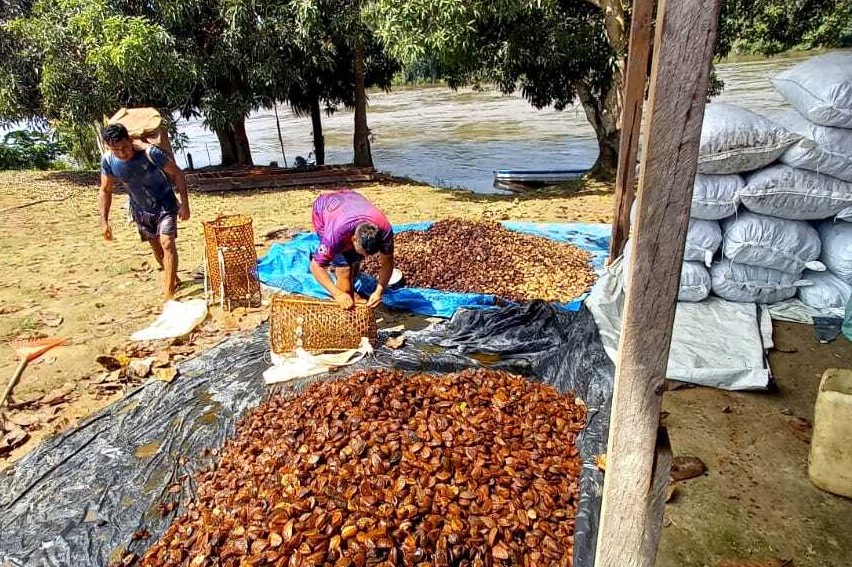Brazil nut production in Northern Pará breaks record

Coopaflora cooperative collectors deliver Brazil nuts at Oriximiná, Pará state. Photo: Courtesy by Coopaflora
The collection of Brazil nut broke a record in northern Pará. The Mixed Cooperative of Traditional Peoples and Communities of Calha Norte (Coopaflora) claims to have sold 98.5 tons of nuts from the February to June harvest. Sales totaled R$ 645.7 thousand (US$ 125 thousand), an increase of 191% in relation to the previous harvest, when the total sold was R$ 221.7 thousand (US$ 43 thousand).
The cooperative brings together gatherers from indigenous, quilombola (former escaped slaves’ descendants) and riverside communities. Nuts collection is an ancestral practice among quilombolas and indigenous people from the municipalities of Oriximiná and Nhamundá, located respectively in Pará and Amazonas states, stresses the Forest and Agricultural Management and Certification Institute (Imaflora), which supports the production. It is a non-timber economic activity that generates income and at the same time encourages forest conservation.
“It is a very strong culture that has been passed from generation to generation among us”, explains Daiana Figueiredo, a quilombola woman and president of Coopaflora. “When January comes, everyone goes to the nut grove and comes back planning to buy some necessities for their family because it is an extra income for us, especially when the harvest is good.”
In the 2022 harvest, in addition to the production and sales figures, the number of participants also increased, reports the cooperative. While in 2021 about 40 families worked directly in the sale of Brazil nuts, this year the participation more than doubled, reaching about 100 families benefited.
This was achieved thanks to the articulation of the production chain, promoted by Coopaflora with the support of the Forest of Value program, carried out by Imaflora and sponsored by Brazil’s state oil company, Petrobras. “We have a scenario of greater credibility of the cooperative in the territories, competitive prices, strengthening of the chain’s operation in Indigenous Lands, all associated with this joint action”, says Léo Ferreira, the institute’s project coordinator.

 Courtesy/Coopaflora
Courtesy/Coopaflora
Leave a comment